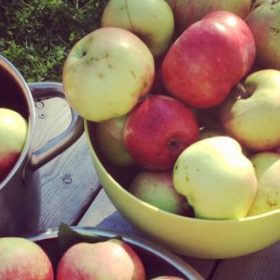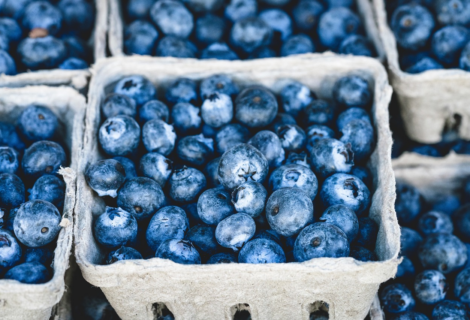Changing your eating habits might seem like a daunting task, but with these 5 simple steps, you can eat healthy, reduce global emissions and help the planet.

- Eat Less Meat
Meat production requires massive amounts of water and land–a key contributor to deforestation worldwide, most notably in the rainforests of Latin America.
- 14.5% of all greenhouse gases come from livestock.
- Every 18 seconds, approximately one hectare (100 acres) of the Amazon rainforest is lost to cattle ranchers.
- According to the Food and Agriculture Organization of the United Nations, nearly 70% of deforestation in Latin America is due to commercial agriculture.
- Half of all grain crops produced in the world are used to feed the world’s 65 billion farm animals instead of the 795 million people in the world who are starving.
- The less meat you eat, the lower your greenhouse gas emissions. CO2 emissions would decrease by 70% if the world’s meat-eaters were to go vegan.
- Choose Local & Seasonal Foods
The impact of food traveling long distances is massive, producing greenhouse gasses that cause global warming.
Instead, choose local foods that have not traveled by plane or boat from another country or state. Other benefits to buying local are supporting local farmers and enjoying fresher foods often picked the same day.
For many of the same reasons, eating in-season foods is an environmentally-friendly choice. For example, eating strawberries in the middle of winter means choosing to buy food that has likely traveled many miles to get to your grocery store.
- Buy Organic Foods
Organic food is grown by farms that meet specific government standards and use environmentally-friendly agricultural methods–without toxic pesticides, fertilizers, hormones, unnatural feed, or antibiotics.
Organic food still has to travel long distances; however, the more demand increases, the more organic farming practices will grow. In the long run, this shift is good for us and the environment.
- Reduce Packaged Foods
Plastic packaging is the single largest contributor to global emissions.
Instead, buy locally at a farmers’ market, choose foods with plastic-free packaging, or shop at bulk stores.
- Eliminate Food Waste
1/3 of all food produced is wasted, making up about 11% of global emissions.
Food waste costs the U.S. $1 trillion per year and is the largest solid waste contributor to landfills. Creating methane–a gas with 25 times the global warming potential of carbon dioxide–food waste is responsible for severe damage to our climate, water, land, and biodiversity.
To fight food waste, make sure to store food properly, eat leftovers, and compost the rest.









